One of my favorite things about being outdoors in spring through early fall are the beautiful native wildflowers here in the Midwest.
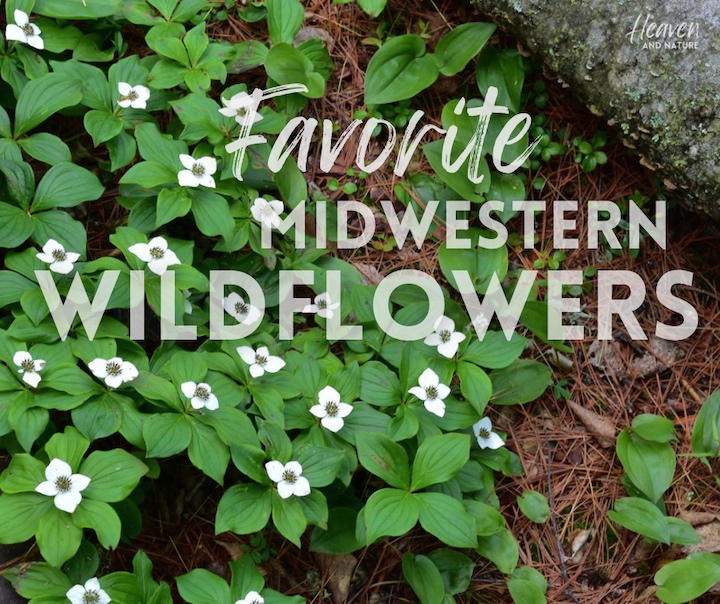
Wildflowers are one of the wonders of our natural world. They grow, literally, everywhere (except maybe Antarctica) in mind-blowing variety.
Seeing these beauties is a wonderful benefit of outdoor activity.
Here’s a close-up look at 15 of my favorite wildflowers found in the Midwest, and especially in my home state of Minnesota:
1. Bee Balm
Wild bee balm (at least in Minnesota) is always this light lilac color. Butterflies and bees love them, so if you want to photograph butterflies, find a patch of bee balm!
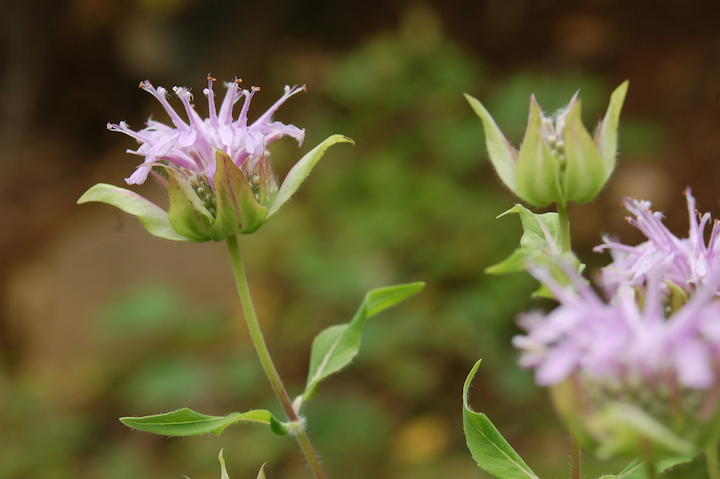
They bloom in mid-late summer through early fall, and grow 2-3 feet tall in sunny meadows, prairies and open fields.
2. Blue Flag Iris
Blue flag irises love wet, swampy areas and lake shores. Their graceful purple and yellow flowers bloom in mid-to-late spring and early summer on stalks a couple feet high.
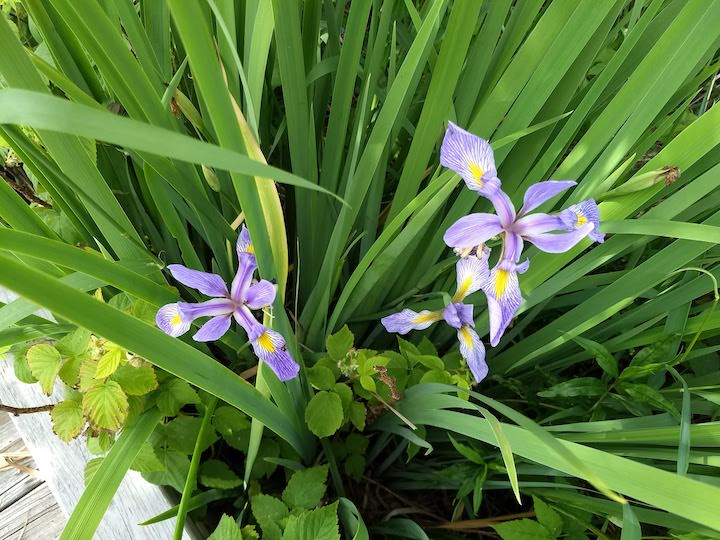
The leaves are just as graceful as the flowers—long and drooped at the ends.
3. Bunchberry
Bunchberry is a shady woodland lover. They’re prolific in the acidic soil of boreal forests (pine). A very common and charming little flower that thrives in Minnesota’s Arrowhead region.
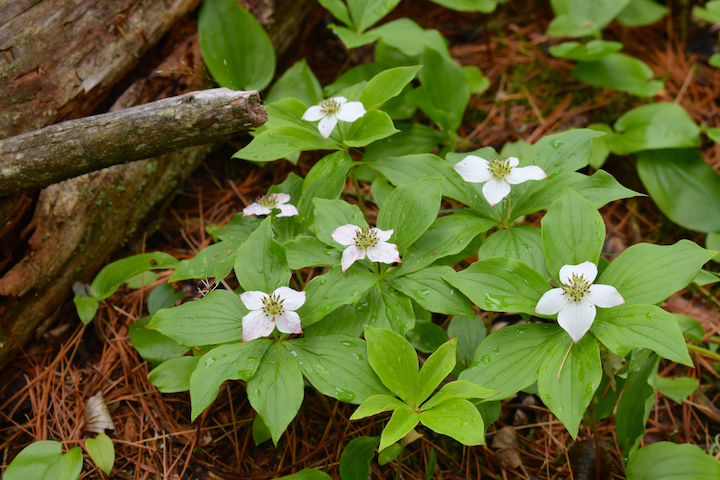
Just 5 or 6 inches tall, each plant has a single white 4-petaled flower in late spring and early summer. The blossoms turn into a cluster of bright red berries later in the summer that are just as distinctive.
(The berries are edible, but not very tasty, from what I hear…I’ve not personally tried them!)
4. Butterfly Weed
I hate calling something this beautiful a “weed”! The bright orange flower clusters of this sun-and-prairie lover are so cheerful. They grow great in sandy soil, too, which means I should get some of this for my yard!
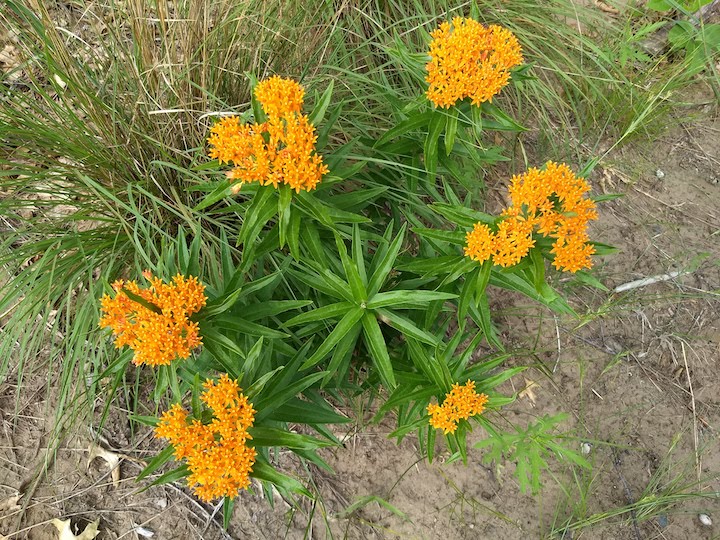
Butterfly weed is a member of the milkweed family and grows 1-2 feet tall in a nice bunch of several stalks.
5. Columbine
Another native flower that loves the shaded woods, columbine grows on stalks a couple feet tall. Their flowers look like they’re upside-down—a bright splash of red and yellow amongst the greens and browns of the forest.

Columbine aren’t as common as many of these other flowers, and they seem to grow singly rather than in bunches. It’s a treat to see one in late spring or early summer.
6. Daisy
It seems the common field daisy can be found just about anywhere. Super adaptable, they brighten up shaded areas and add character to sunny meadows.
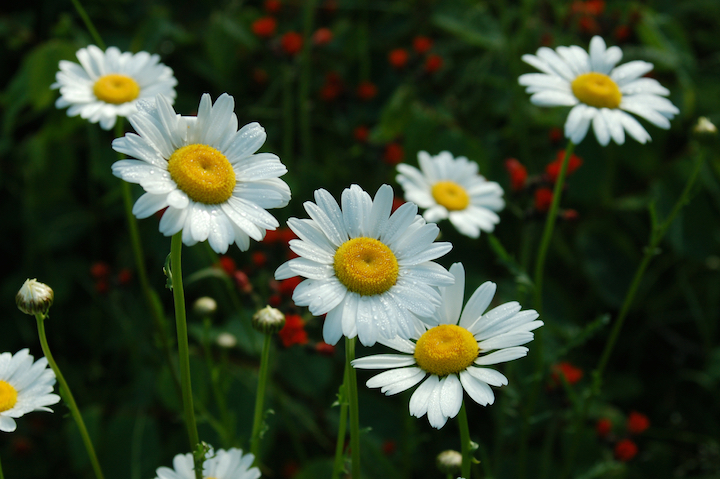
Like harebells, daisies bloom all summer long in many areas. Even though they’re common, they’re so cheerful it’s always delightful to see them!
7. Fireweed
Fireweed can be mistaken for lupine if you’re not familiar with which grows when. The two flowers like the same habitats and are both purple with tall flower spikes.
But the differences are that fireweed blossoms are less condensed on the stalk. And they bloom in mid-to-late summer rather than late spring.

They get their name from their ability to grow back quickly after a forest fire.
I remember seeing this first-hand back in 2007 when there was a major fire in the Boundary Waters and along the Gunflint Trail. The fire went through in May and June. By July we could see fireweed blooming against the black backdrop of the burnt trees. Amazing!
8. Harebell
Harebell is distinctive for its ability to grow right out of rocks. We commonly see them next to Lake Superior, or on the sides of cliffs.

From late spring through the summer, their blue-purple color is eye-catching. The plant size ranges from about 6-20 inches.
9. Lupine
While the Midwest is home to native wild lupine, Minnesota’s Arrowhead is also home to runaway garden lupine. They’ve naturalized and flourished along Lake Superior’s North Shore and other places where the seeds were planted once upon a time.

These lupine love northern Minnesota’s cool summer climate with lots of sun. They grow 2-3 feet tall with their striking flowers. They’re most commonly purple, but pink and white are also interspersed occasionally.
Wild lupine, interestingly, doesn’t grow up there! It’s native to southeast Minnesota and other areas of the Midwest.
10. Pink Lady’s Slipper
A member of the orchid family, like all the lady’s slippers, the pink variety grows in various types of mixed forests.
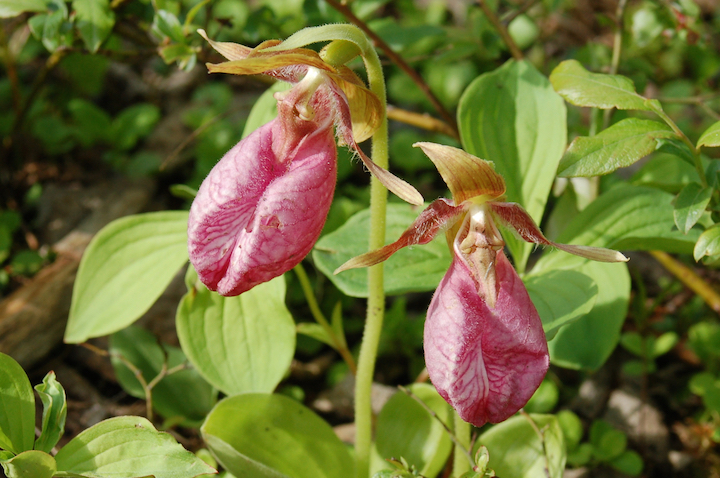
The plants are small, 6-15 inches, and with just a single flower they can be tricky to spot. And a treat when we do—they’re not common.
It takes several years for each plant to produce a flower, and they can live to be 20 years old! Pink Lady’s slipper is Minnesota’s state flower.
11. Prairie Lily
These showy orange flowers grow in both prairies and woodlands. In fact, it’s also known as the wood lily.
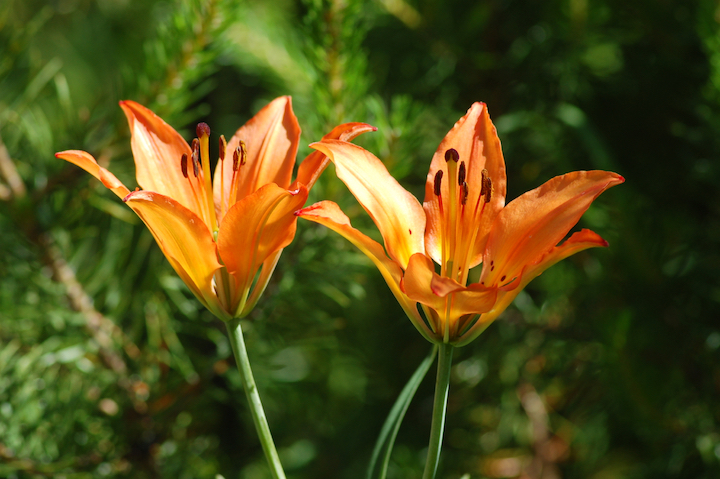
Distinctive, upright orange flowers bloom on 2-3 foot stalks during the summer.
12. Star Flower
Star flowers are low-growing shade lovers with tiny, delicate flowers shaped like a 7-pointed star.
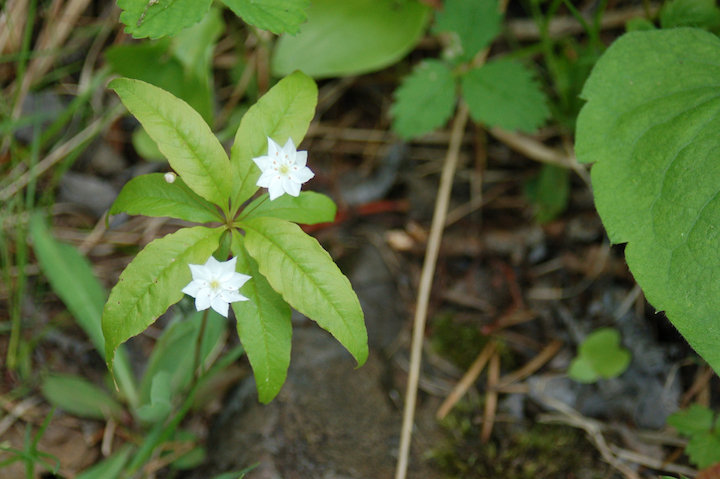
If you look closely, you’re likely to find these in the same places and in the same season (spring) as the bunchberry.
13. Turk’s Cap Lily
A sun lover that can also handle shade, turk’s cap lillies are showy and stunning bloomers on stalks that can be several feet tall. They bloom in mid-summer.
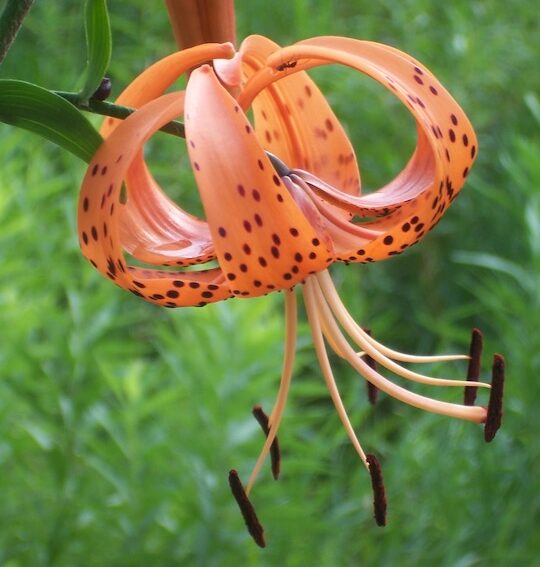
These suddenly started to grow in our yard many years ago, seeds brought by birds, I imagine. Ever since I keep part of a flower bed cleared for them—they’re so lovely and graceful!
14. Trillium
These beauties love deciduous forest floors and bloom in early spring. The particular one shown in the photo above it the white-flowered trillium.
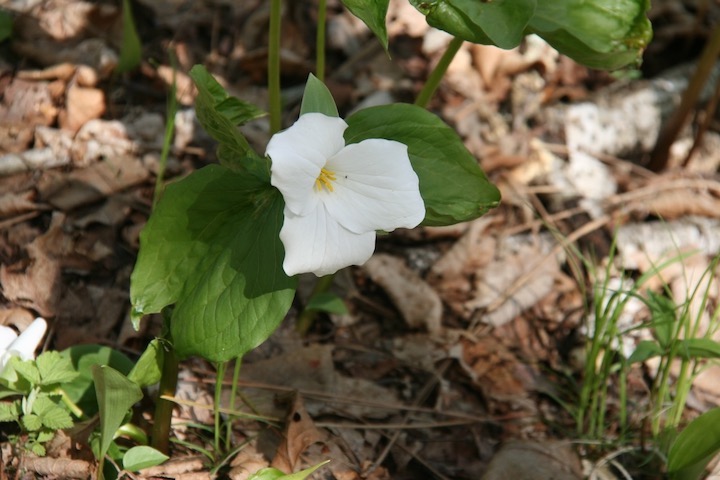
Trillium plants themselves aren’t real tall, 8-18 inches, but the blooms can be up to 4 inches across. Very eye-catching!
15. White Water Lily
Where there are lily pads there will be water lilies. The intricate blooms are quite large—often 3-4 inches across.
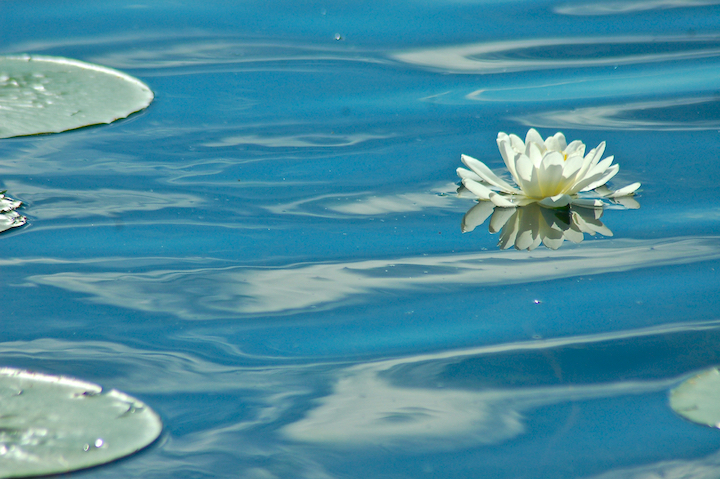
These are seen best (and especially photographed) from a canoe or kayak in late spring through summer, and even into early fall.
16. Wild Aster
Like mini lilac daisies, wild aster grows on stalks several feet high. Each stalk forms several clusters of these little flowers which makes them seem bigger.
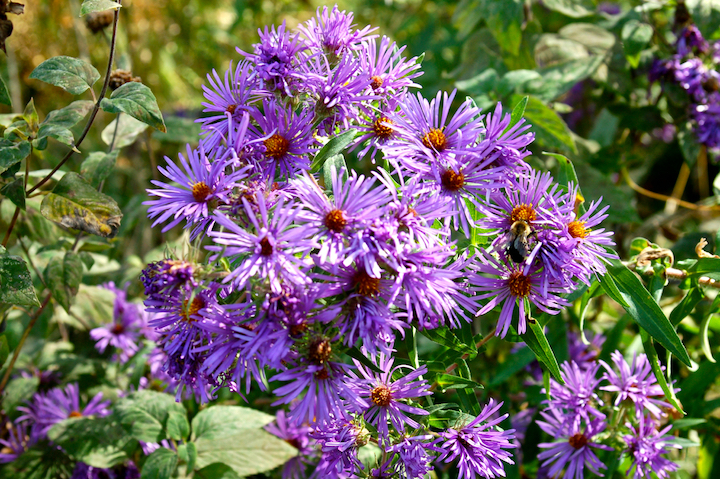
These are a favorite with bees and butterflies, too. They thrive in sunny meadows in mid-late summer and all the way through September.
17. Wild Rose
We’ve seen these beautiful flowers grow in both sun and shade. The blooms can be anything from a delicate pink to magenta. Like any rose, they grow on bushes with thorny branches, so be careful!

Later in the summer each bloom turns into a bright red rose hip. The hips are edible (high in Vitamin C) either to eat in salads or be made into delicious jam (which is a ton of work, my friends say).
Wild rose is Iowa’s state flower.
If you’re like me and like to know what you’re looking at when you’re outdoors, I suggest picking up a wildflower field guide like Wildflowers of Minnesota by Stan Tekiela.
Ours has gotten well-used over the years. (That’s where I got many of my facts for this post.)
Wildflowers are jewels of nature. They’re a wonderful display of God’s creativity and His love of beauty!
Here’s more…
- 11 Wonderful Things in Our Natural World - February 6, 2025
- What Kind of Exercise Is Best? - January 10, 2025
- 116 Verses in the Bible that Talk About Light - December 10, 2024
